Cosmic leviathan

esahubble_potw2319a May 8th, 2023
Credit: ESA/Hubble & NASA, H. Ebeling
A vast galaxy cluster lurks in the centre of this image from the NASA/ESA Hubble Space Telescope. Like a submerged sea monster causing waves on the surface, this cosmic leviathan can be identified by the distortions in spacetime around it. The mass of the cluster has caused the images of background galaxies to be gravitationally lensed; the galaxy cluster has caused a sufficient curvature of spacetime to bend the path of light and cause background galaxies to appear distorted into streaks and arcs of light. A host of other galaxies can be seen surrounding the cluster, and a handful of foreground stars with tell-tale diffraction spikes are scattered throughout the image. This particular galaxy cluster is called eMACS J1823.1+7822, and lies almost nine billion light-years away in the constellation Draco. It is one of five exceptionally massive galaxy clusters explored by Hubble in the hopes of measuring the strengths of these gravitational lenses and providing insights into the distribution of dark matter in galaxy clusters. Strong gravitational lenses like eMACS J1823.1+7822 can help astronomers study distant galaxies by acting as vast natural telescopes which magnify objects that would otherwise be too faint or distant to resolve. This multiwavelength image layers data from eight different filters and two different instruments: Hubble’s Advanced Camera for Surveys and Wide Field Camera 3. Both instruments have the ability to view astronomical objects in just a small slice of the electromagnetic spectrum using filters, which allow astronomers to image objects at precisely selected wavelengths. The combination of observations at different wavelengths lets astronomers develop a more complete picture of the structure, composition and behaviour of an object than visible light alone would reveal. [Image description: A cluster of large galaxies, surrounded by various stars and smaller galaxies on a dark background. The central cluster is mostly made of bright elliptical galaxies that are surrounded by a warm glow. Close to the cluster core is the stretched, distorted arc of a galaxy, gravitationally lensed by the cluster.] Links Pan: Cosmic leviathan
Provider: Hubble Space Telescope | ESA
Image Source: https://esahubble.org/images/potw2319a/
Curator: ESA/Hubble, Baltimore, MD, United States
Image Use Policy: Creative Commons Attribution 4.0 International License
 Color Mapping
Color Mapping
| Telescope | Spectral Band | Wavelength | |
|---|---|---|---|

|
Hubble (ACS) | Optical (B) | 435.0 nm |

|
Hubble (ACS) | Optical (V) | 606.0 nm |

|
Hubble (WFC3) | Infrared (Y) | 1.1 µm |

|
Hubble (WFC3) | Infrared (YJ) | 1.1 µm |

|
Hubble (WFC3) | Infrared (J) | 1.3 µm |

|
Hubble (ACS) | Optical (I) | 814.0 nm |

|
Hubble (WFC3) | Infrared (JH) | 1.4 µm |

|
Hubble (WFC3) | Infrared (H) | 1.6 µm |










- ID
- potw2319a
- Subject Category
- Subject Name
- eMACS J1823.1+7822
- Credits
- ESA/Hubble & NASA, H. Ebeling
- Release Date
- 2023-05-08T06:00:00
- Lightyears
- Redshift
- Reference Url
- https://esahubble.org/images/potw2319a/
- Type
- Observation
- Image Quality
- Distance Notes
- Facility
- Hubble Space Telescope, Hubble Space Telescope, Hubble Space Telescope, Hubble Space Telescope, Hubble Space Telescope, Hubble Space Telescope, Hubble Space Telescope, Hubble Space Telescope
- Instrument
- ACS, ACS, WFC3, WFC3, WFC3, ACS, WFC3, WFC3
- Color Assignment
- Blue, Cyan, Yellow, Yellow, Yellow, Green, Red, Red
- Band
- Optical, Optical, Infrared, Infrared, Infrared, Optical, Infrared, Infrared
- Bandpass
- B, V, Y, YJ, J, I, JH, H
- Central Wavelength
- 435, 606, 1050, 1100, 1250, 814, 1400, 1600
- Start Time
- Integration Time
- Dataset ID
- None, None, None, None, None, None, None, None
- Notes
- Coordinate Frame
- ICRS
- Equinox
- J2000
- Reference Value
- 275.84250403914655, 78.38646452001112
- Reference Dimension
- 2839.0, 2389.0
- Reference Pixel
- 1419.5, 1194.5
- Scale
- -1.3903169891906589e-05, 1.3903169891906589e-05
- Rotation
- 110.15999999999995
- Coordinate System Projection:
- TAN
- Quality
- Full
- FITS Header
- Notes
- Creator (Curator)
- ESA/Hubble
- URL
- https://esahubble.org
- Name
- Telephone
- Address
- ESA Office, Space Telescope Science Institute, 3700 San Martin Dr
- City
- Baltimore
- State/Province
- MD
- Postal Code
- 21218
- Country
- United States
- Rights
- Creative Commons Attribution 4.0 International License
- Publisher
- ESA/Hubble
- Publisher ID
- esahubble
- Resource ID
- potw2319a
- Resource URL
- http://esahubble.org/media/archives/images/original/potw2319a.tif
- Related Resources
- Metadata Date
- 2023-05-03T16:01:43+02:00
- Metadata Version
- 1.1
Detailed color mapping information coming soon...






